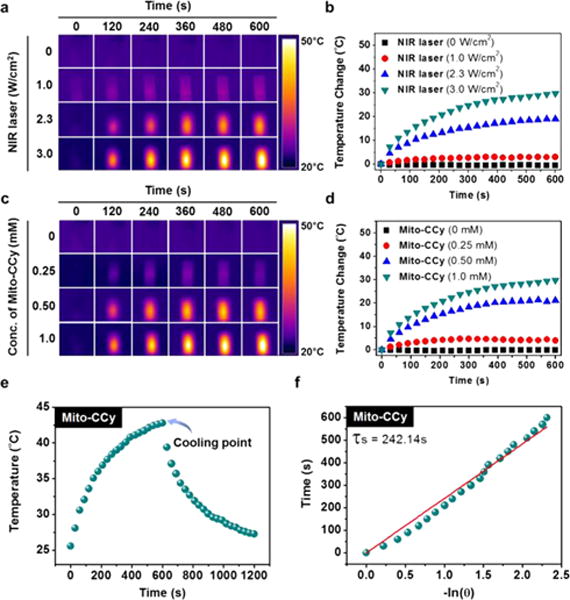Figure 4.

Photothermal conversion utility of Mito-CCy. IR thermal images of DMSO solutions of Mito-CCy (a and c). Mito-CCy concentration = 0.5 mM and irradiation intensities of 0, 1.0, 2.3, and 3.0 W/cm2 at 730 nm (a) and 2.3 W/cm2 irradiation (730 nm) at various Mito-CCy concentrations (0, 0.25, 0.50, and 1.0 mM) (c) as a function of irradiation time. Photothermal heating curves for DMSO solutions of Mito-CCy at constant 0.5 mM concentrations of Mito-CCy and various laser irradiation intensities (0, 1.0, 2.3, and 3.0 W/cm2, 730 nm) (b) and constant irradiation at 2.3 W/cm2 with varying Mito-CCy concentrations (0, 0.25, 0.50, and 1.0 mM, 730 nm) (d) as a function of irradiation time. Photothermal effects observed upon irradiating Mito-CCy with 730 nm laser light (2.3 W/cm2) for 600 s and then stopping the irradiation (e). Time versus–ln(θ) plot (with θ being the driving force temperature, cf. eq S5) (f) obtained using the data recorded during the cooling period of the experiment outlined in (e). A Ti:Sa femtosecond-pulsed laser (Chameleon XR by Coherent, 200 fs pulse width, 90 MHz repetition rate) was used.
